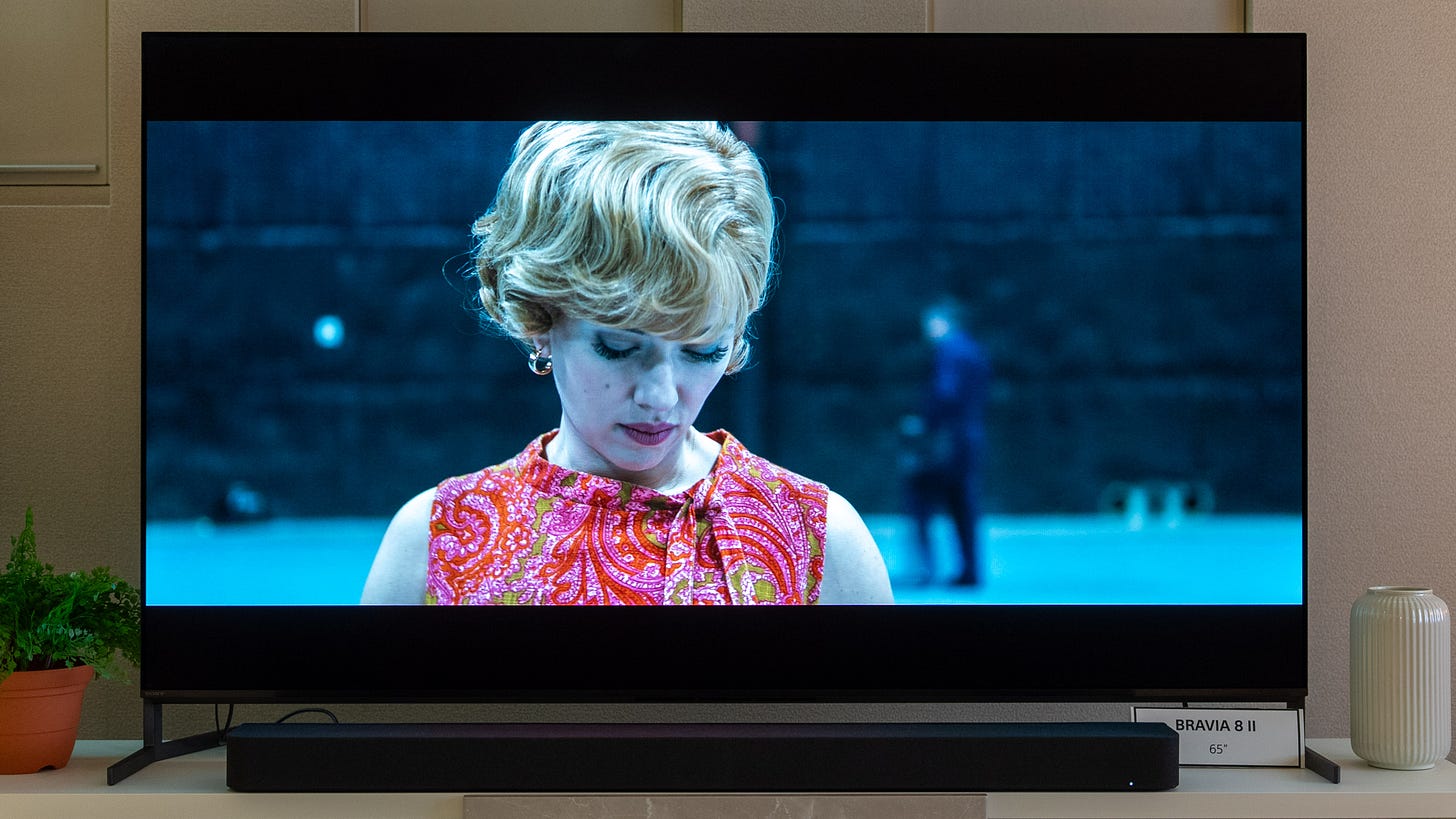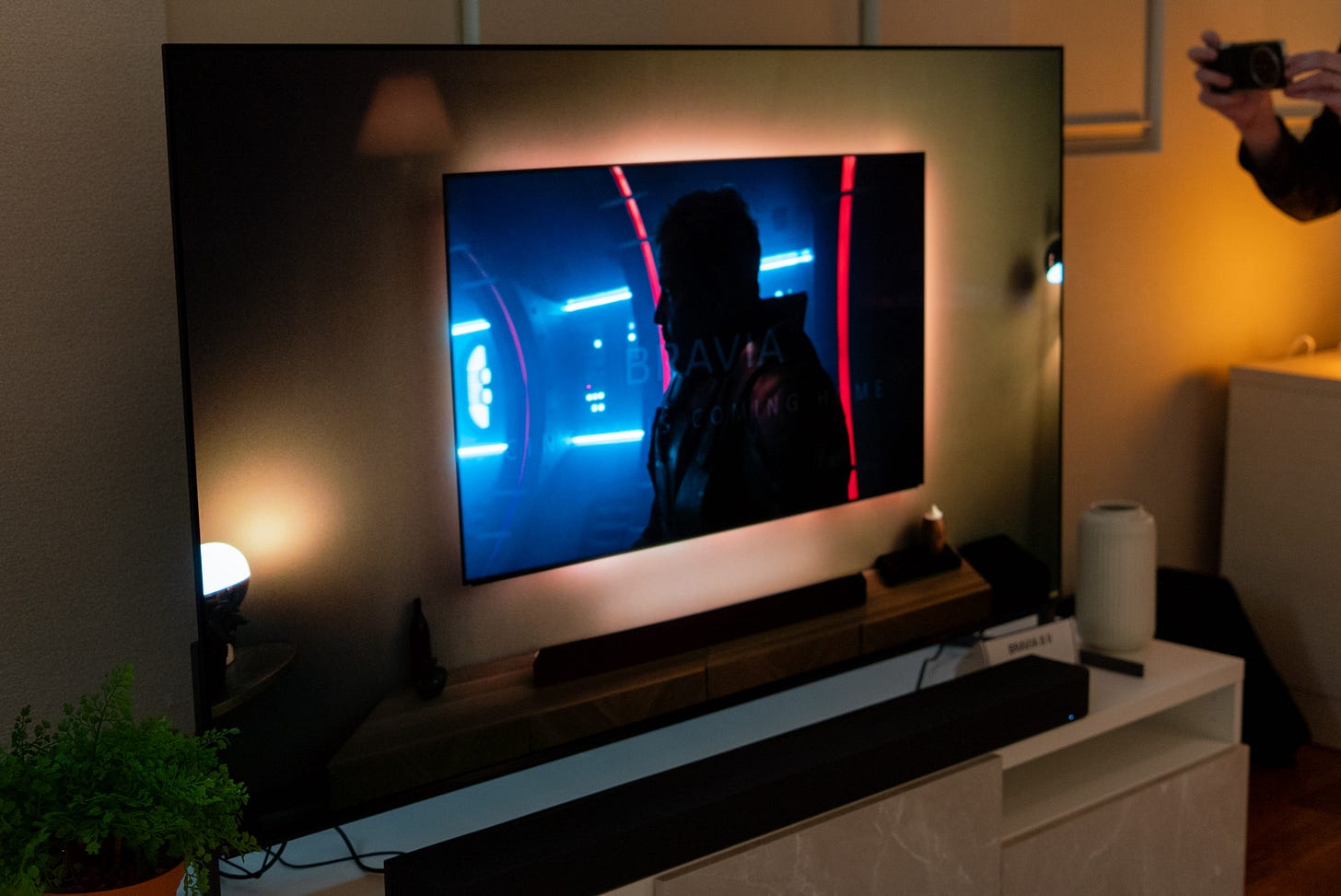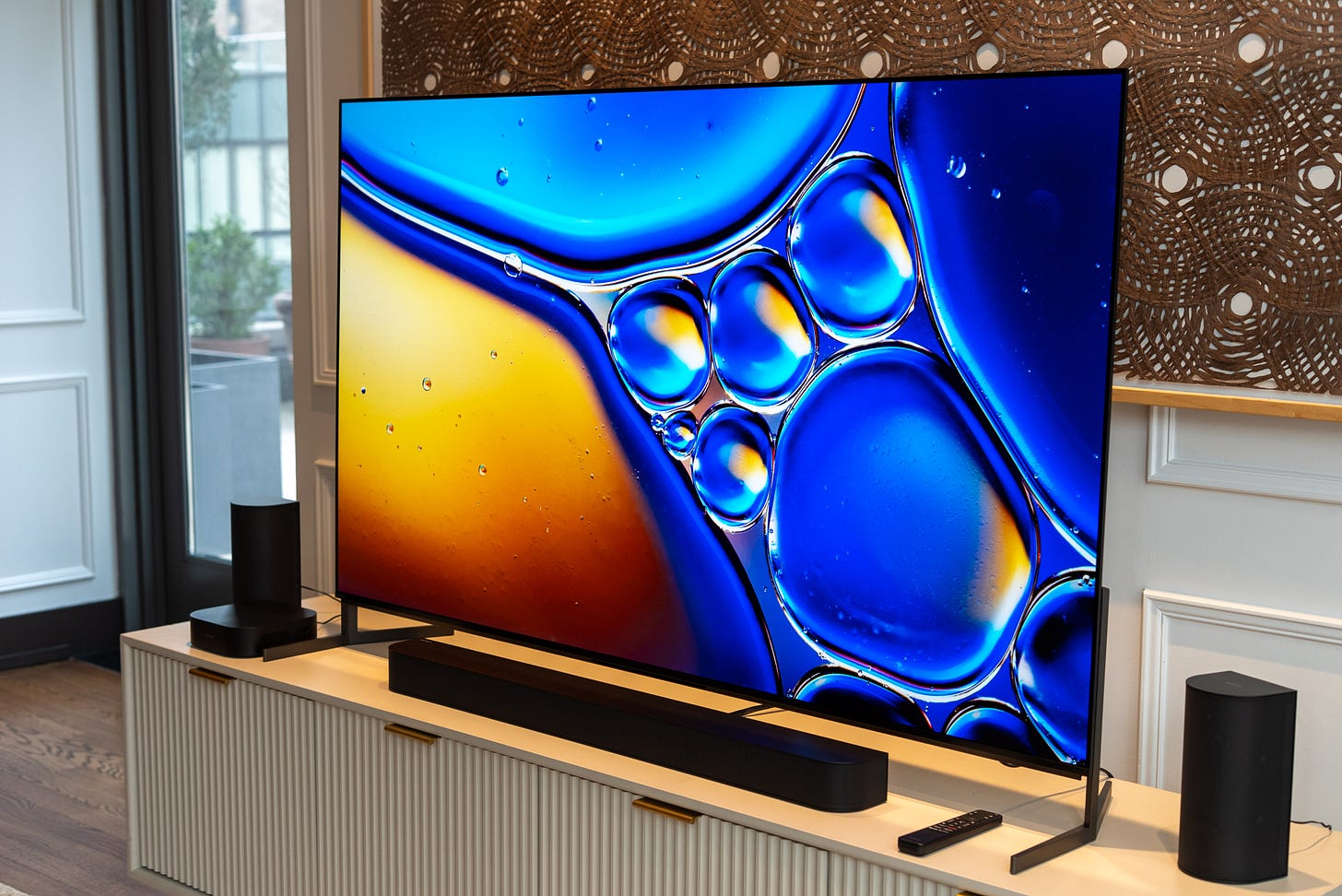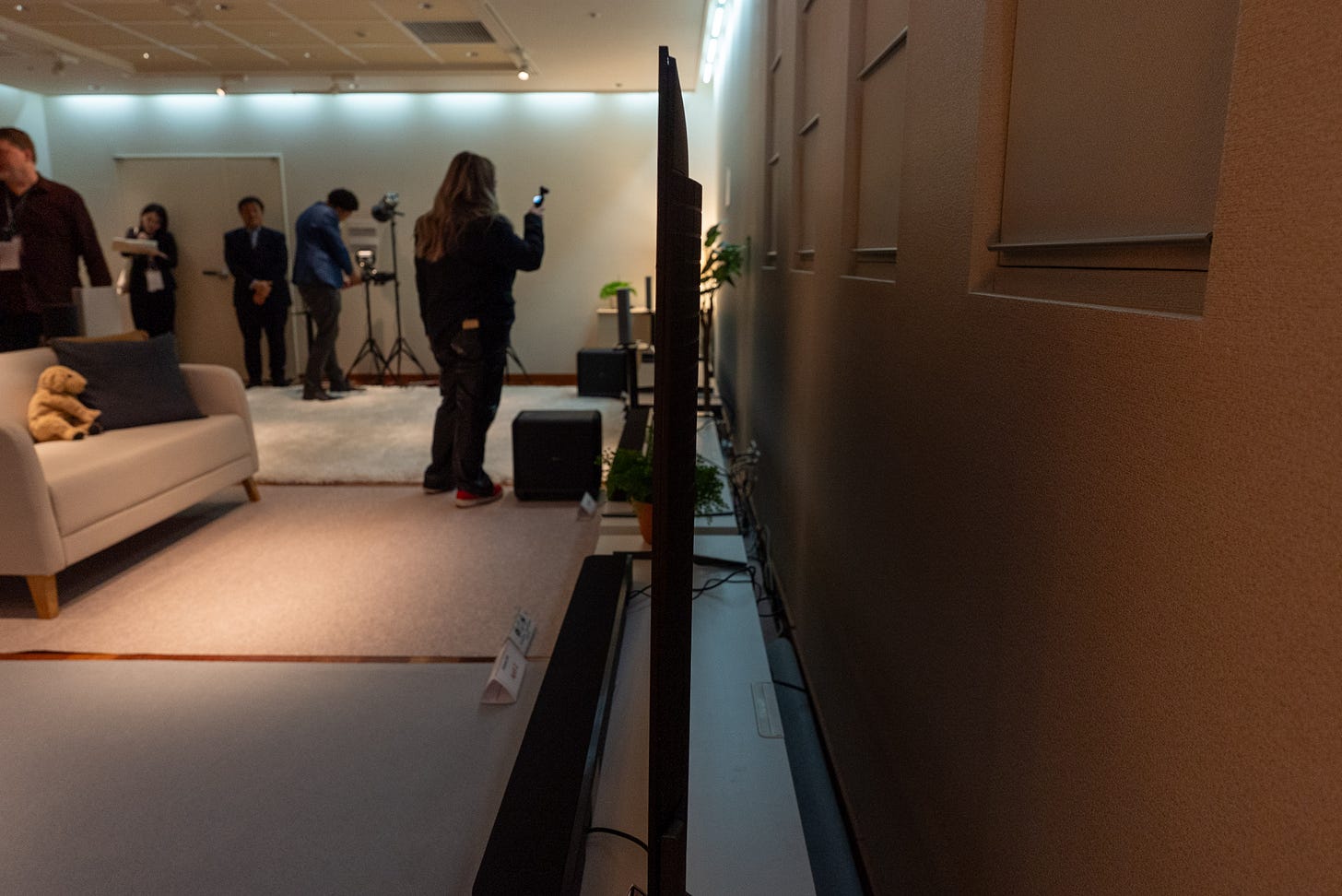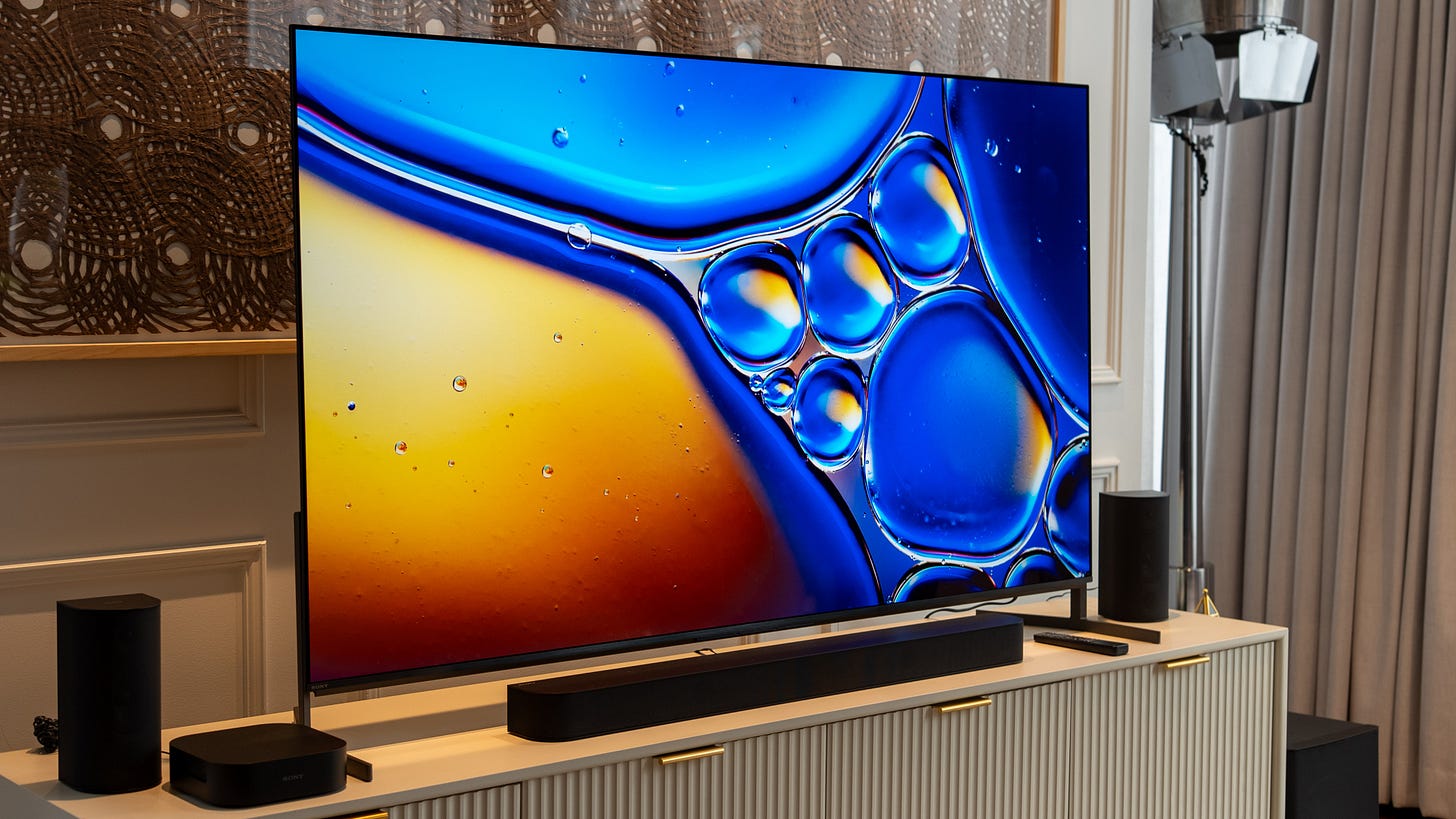Pros
✅ 📺 Significantly brighter QD-OLED panel
✅ 🔆 25% brighter than the Sony A95L and 50% brighter than Sony Bravia 8
✅ 🎬 Adaptive calibrated modes for Netflix, Prime Video, and Sony Pictures Core
✅ 🔊 Acoustic Surface Audio + throws sound directly at you through the screen
Cons
❌ ✌️ Only available in 55- and 65-inch screen sizes
❌ 🤑 High price of $3,499 (55-inch) or $3,999 (65-inch)
The Sony Bravia 8 II is the new QD-OLED TV I’ve been waiting for to truly replace the Sony A95L. While the Sony Bravia 8 launched last year was a great set, its WOLED panel just didn’t produce the brightness and vibrant colors I needed. The Bravia 8 II however fixes all of that with an added quantum dot layer, promising 25% higher brightness over the A95L and 50% more brightness than the Bravia 8. There’s also new XR Triluminos Max technology that helps boost color gamut and accuracy.
Sony is also taking calibration to the next level with the Bravia 8. Firstly if you’re watching Netflix or Prime Video, you can enable an adaptive calibrated mode that changes depending on the content your streaming. More globally, Sony is bringing in AI with scene-recognition that analyzes and makes the picture look more realistic. I’ve only been able to see the Sony Bravia 8 II for a total of two hours so I can’t wait to get it in for a full review and further testing.
📺 QD-OLED upgrade. The Sony Bravia 8 II is the true successor to the Sony Bravia A95L that was released in 2023. While Sony launched the first Bravia 8 last year, it used a WOLED panel without any quantum dots. This QD layer allows the Bravia 8 II to hit a higher 25% brightness over the A95L and a whopping 50% peak brightness over the original Bravia 8.
🌈 Better color to boot. Aside from straight-up brightness, the Sony Bravia 8 II features XR Triluminos Max technology for a wider and more accurate color gamut. If you’ve ever looked at the original Bravia 8 and wished reds were more vibrant, the Bravia 8 II can display every rosy shade in between crimson and scarlet.
🤩 Seeing is believing. I saw the Bravia 8 II twice last month, once in Tokyo and once here in NYC, and the picture quality of Sony’s new QD-OLED TV is astounding. Looking at the Bravia 8 II next to the A95L, the brightness increase is more than noticeable and makes the contrast pop more for a more seemingly detailed image. Unfortunately, I wasn’t able to plug in any gaming devices or play any physical/streaming media, so my evaluations are only based on the sample footage Sony had looping on its TVs.
🖼️ AI scene enhancement. AI is the new hotness for 2025 TVs, whether we like it or not. Thankfully, Sony has a scaled-down approach with a new AI scene-recognition system. Powered by the TV’s XR Processor, it detects and analyzes the picture to display a more realistic image. Sony didn’t dive deep into the feature, but it’s a little refreshing that the Sony Bravia 8 II isn’t adding a laundry list of AI features like Samsung and LG are.
🎛️ Multiple calibrated modes. Speaking of scene enhancement, Sony is adding more calibrated modes for different apps. Last year, Sony introduced a new Prime Video Calibrated on the Bravia 7 and Bravia 9, and now it’s being joined by Netflix Adaptive Calibrated Mode and Sony Pictures Core Calibrated Mode. These calibrated modes are basically Film Maker Modes, but they’re also a bit more adaptive and change based on the type of content you’re watching (i.e. movies vs sports). It’s a pretty handy feature if you never know what picture profile to select, and I love that the apps can speak directly with the TV to adjust the picture settings to match the creator’s intent.
🔊Acoustic Surface Audio +. Like Sony’s past OLED TVs, the Bravia 8 II’s entire display is a speaker. This front-facing speaker makes the Bravia 8 sound better than most thin-panel TVs and it works even better as a center channel in conjunction with Sony’s soundbars and sound systems like the Bravia Bar 9 and Bravia Quad.
🎬 Two size options. The Sony Bravia 8 will be available in 55- and 65-inch sizes. Unfortunately, there won’t be a 77-inch screen, and Sony tells us customers will have to get a Sony A95L if they want a larger OLED. That also leaves out smaller screen options so if you want a 42- or 48-inch TV to use as a desktop monitor, look to the LG C5 OLED evo. Sony also says it will announce pricing for the Bravia 8 II by Spring 2025.
🤑 Expensive. The Sony Bravia 8 II is one of the most expensive TVs of 2025 set at $3,499 for the 55-inch screen size. That makes this TV $500 more expensive than the 55” Sony A95L and a huge price increase over the $1,999 55” Sony Bravia 8. Sony is demaning a high price even compared to LG’s flagship LG G5 OLED evo, which runs for $2,499.
Kevin Lee is The Shortcut’s Creative Director. Follow him on Twitter @baggingspam.





